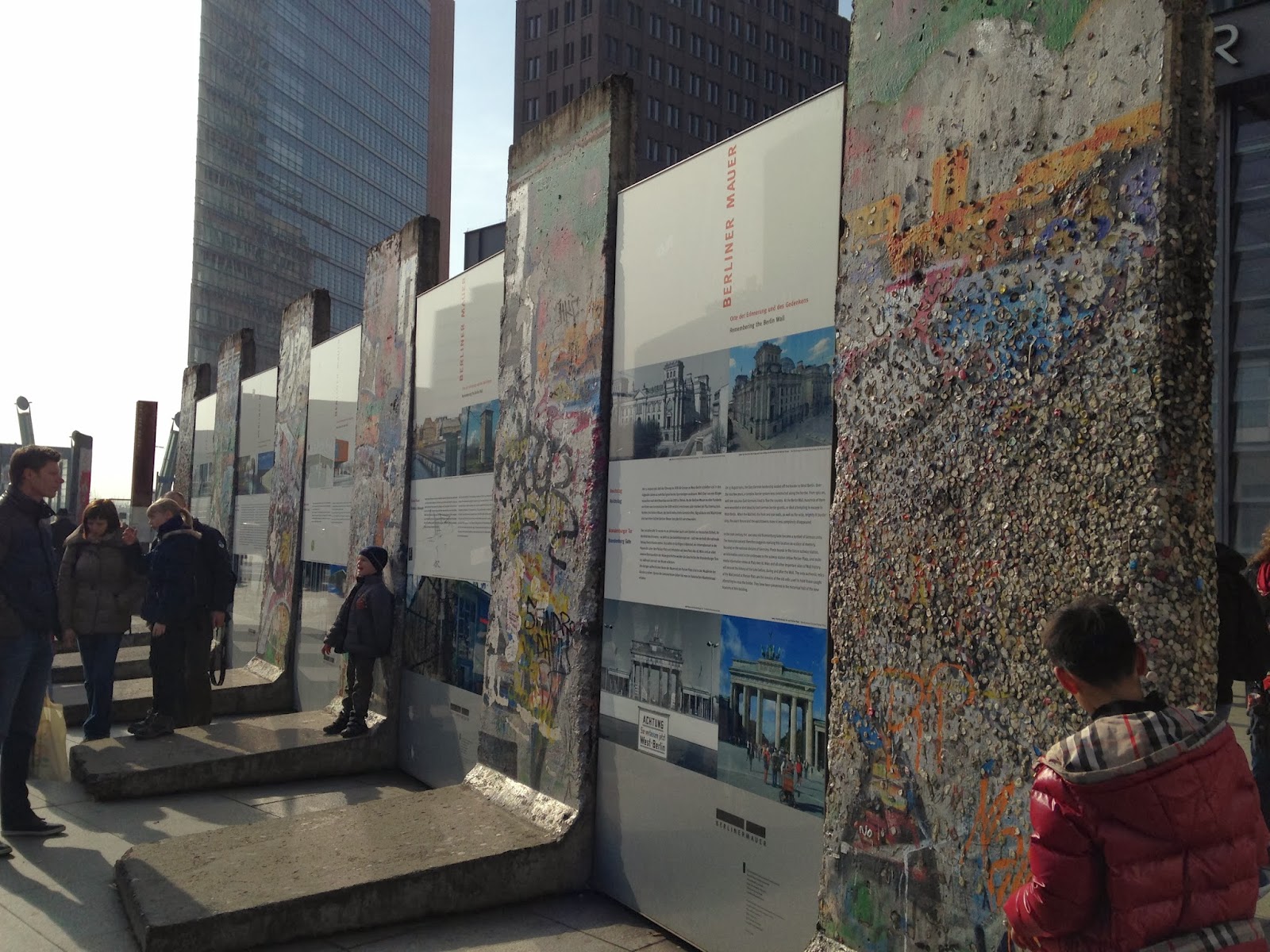While there is still more to share from our trip to Prague, I have been busy this last week preparing lesson plans and finishing school work and haven't had time to write any more blogs. However, we visited Berlin over the weekend, so I figured that I would sidetrack to Berlin for now.
Hauptbahnof is the German word for main station.
As you know, Berlin in the capital of Germany. It is only about 2 hours away from Dresden; however, we took the slow train there so our travel time was extended to 3 1/2 hours.
As seen by their main train station, Berlin is a modern city. Many of its buildings were rebuilt after World War II since the city was destroyed both by bombings and by the Battle of Berlin. In addition, new buildings were constructed following the reunification of Germany in 1990. While these new buildings create an air of modernity to Berlin, they are oftentimes found next to refurbished historical buildings, which creates a unique charm.
As Berlin's Hauptbahnof is close to many government buildings, we began our tour with those buildings. The above picture is where the Chancellor of Germany, currently Angela Merkel, works, while the below picture is a picture of the Bundestag.
The Bundestag is the German Parliament that meets in a historical building called the Reichstag. The Reichstag was built during the German Imperial period for the use of the German legislative body, which was also called the Reichstag at this time. In the 1930's , the building fell into disuse as Hitler began to accumulate power.
Using a fire in the Reichstag as a pretext, Hitler used legislative loopholes to consolidate his power which ended the power of the Reichstag. This turned the Reichstag into a ceremonial body, who rarely met and when they did , they did not use the Reichstag due to damage from the fire. During the Cold War, the Reichstag remained unused and was eventually closed off by the Berlin Wall. Following German reunification, the building was finally refurbished, both from the 1933 fire and from damage the building received during the war. After the refurbishment was completed in 1999, the Reichstag once more became the home of the German legislative body.
One block from the Bundestag is the Brandenburg Gate. This gate was originally a city gate built in the 18th century and was rebuilt later in the century to represent peace. At the time it was rebuilt, it was situated on the boulevard that led to the king's palace; however, that palace was demolished by the German Democratic Republic in 1950.
The Gate itself was heavily damaged in the 1940's and during the Cold War it was inaccessible to both East Berliners and West Berliners. Following German reunification, it was reopened and eventually refurbished in 2002. Following its refurbishment, the area around the gate was turned into a pedestrian square, which is how it remains today.
Close to the Brandenburg Gate is a memorial dedicated to the Holocaust. The memorial has an interesting design which was never disclosed. This has led to multiple interpretations of the memorial. Dr. Gommlich has his own theory about the design which he said should make sense once we visit a concentration camp. Wikipedia says that many observers say that the memorial reminds them of a cemetery which is attributed to be the overall design of the memorial. I feel that maybe the designer's purpose was to make you reflect on the Holocaust to derive the meaning which would explain why he never disclosed the design to anyone.
From the Holocaust memorial, we continued on to see sections of the Berlin Wall. Different locations within the city house these remnants, the majority of which are located at Checkpoint Charlie.
While Checkpoint Charlie was interesting to see, it was very touristy. It was more enjoyable to see remnants of the wall next to everyday buildings, as in the above picture, then to see portions of the wall in a tourist area. However, I suppose that is to be expected and if you enjoy the history of the Cold War era then you should visit Checkpoint Charlie if you are in Berlin.
The stop after Checkpoint Charlie, the Berlin Cathedral, proved to be my favorite location. While a church has been located on this site since the 15th century, the current church, built in the Neo-Renaissance style, was inaugurated in 1905 by Kaiser Wilhelm.
Even though the church is Protestant, in spite of being called a cathedral, it is a beautifully decorated church. This church was recognized as the Supreme Parish Church and as such was the burial site for the Hohenzollern dynasty, the kings of Prussia and later the emperors of Germany.
The admission ticket to the cathedral included access to the dome where there are spectacular views of historical Berlin, in spite of ongoing construction. From the dome, you can see a multitude of museums, the River Spree, the construction of the City Palace, and churches, among other buildings.
The touring of the cathedral was our last major stop for the day and, as I mentioned, my favorite part. I found Berlin to be a wonderful city to visit which surprised me since I have never had any desire to visit. I would like to revisit the city because I know there was a lot that we didn't see and so I can visit Potsdam, the location of Prussian palaces, which borders Berlin to the southwest. Overall, Berlin is fascinating and from our brief tour, it seems as though it is a city that has something to offer to everyone.




























